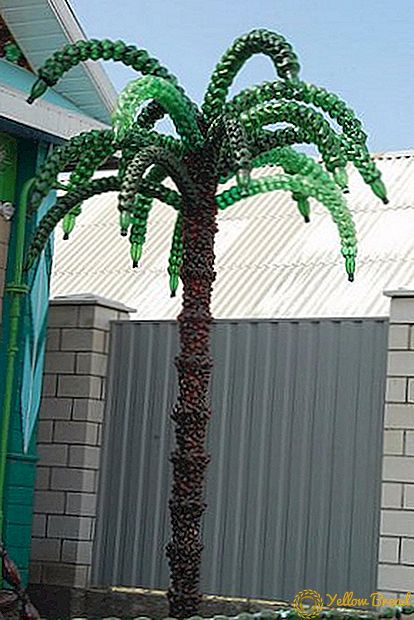 Birch tar - birch resin. It is used in cosmetics, healing, veterinary medicine, as well as in gardening and horticulture to protect against pests. For the garden and garden - an indispensable substance.
Birch tar - birch resin. It is used in cosmetics, healing, veterinary medicine, as well as in gardening and horticulture to protect against pests. For the garden and garden - an indispensable substance.
In this article we consider the features of the use of birch tar to combat various pests.
- Application in the garden
- Colorado beetle
- Onion fly
- Carrot fly
- Cabbage Fly
- Cabbage butterfly
- Wireworm
- Application in the garden
- Codling moth
- Gooseberry sawfly
- Gooseberry Fire
- Raspberry-strawberry weevil
- Cherry sawfly
- Hawthorn
- Plum moth
- Spider mite
- Aphids and ants
- Moles
- Mice
- Hares
Application in the garden
Birch tar has a specific smell and taste, a special oily consistency.  It is these properties that help in the fight against pests of garden plants. Tar is not poisonous.
It is these properties that help in the fight against pests of garden plants. Tar is not poisonous.
Colorado beetle
To combat the Colorado potato beetle, you need to tar to process potatoes. To do this, use two methods: treatment of tubers and holes before planting and spraying potato shoots, and later - shoots.

Onion fly
The pest most often affects onions and garlic. To combat it, birch tar is also used in two ways. You can soak the seeds before planting in a mixture of matter and water: for 1 liter of water 10 g of tar.
It is possible during the laying of a fly eggs two or three times (after 10-15 days) to treat the beds and pour a solution: for 1 bucket of water - 20 g of tar. 
Carrot fly
The insect affects the roots - carrots, beets, etc. To protect the crop, it is necessary to process the plants twice: in June and August. Spraying does not help, it is necessary to water the plants with a solution.
Here it is necessary to add the host to the solution. soap: 1 bucket of water 1 tbsp. l tar and 20 g of soap. Water the plants under the root. 
Cabbage Fly
A fly affects all crucifers in the garden: cabbage, daikon, radishes, etc.Sawdust soaked in a solution of birch resin will help to get rid of this garden pest: 1 tbsp. l on 1 bucket of water.
These sawdust poured the ground under the plants. The smell will scare away insects. 
Cabbage butterfly
Cabbage butterflies are dangerous in that the larvae that feed on the plant during the transplanting period or head out in the stage of maturation lay on the cabbage leaves. Kapustnitsa scare away again the smell. It will be most effective to wind a rag dipped in tar on pegs and arrange it on a cabbage plantation. 
Wireworm
It affects potatoes, carrots, beets and other root vegetables. In the fight against this pest, the treatment of plants will be different. Potatoes must be treated with a solution before planting in the ground, and the plants that are planted with seeds, watered.

Application in the garden
Garden pests can affect the leaves of trees and bushes, bark, roots and, of course, fruit. Therefore, the fight against them is conducted in different ways. The use of tar in gardening is very popular.
Codling moth
It is necessary to fight with the pest of the codling moth during the flowering period. Trees are treated with a solution: for 1 bucket of water, 10 g of birch resin and 30 g of soap. You can attach small tanks with tar to the branches. 
Gooseberry sawfly
Pale-legged gooseberry sawflies affects gooseberries and currants. To combat this pest prepare a special mixture. 100 g chips households. soap, 2 tbsp. l tar and 1 tsp. diluted with 1 liter of boiling water. Add 5 liters of warm water and spray the bushes 3-4 times per season. 
Gooseberry Fire
This garden pest, like the sawfly, affects gooseberries and all kinds of currants. To combat it, it is also necessary to spray the bushes with the above solution, but without ash. On 1 bucket of water - 30 g of grated soap and 2 tbsp. l the tar Processing is carried out before flowering. Later - hang on the branches of the tank with a clean birch resin. 
Raspberry-strawberry weevil
This pest is called the flower beetle. It can also be expelled by treating the bushes before the appearance of flowers. It is necessary to dilute in 1 bucket of water 2 tbsp. l the tar 
Cherry sawfly
To combat this pest single treatment is indispensable. When the leaves begin to bloom, it is necessary to spray the cherries with a solution. A week later, repeat, then - as needed. Solution: on 10 liters of water 30 g of soap, 1 tbsp. lresinous substance. 
Hawthorn
Here the pest is not the hawthorn butterfly itself, but its larvae-caterpillars. They damage the leaves of apple trees, bird cherries, cherries, pears, mountain ash and other garden trees. Caterpillars destroy both leaves and flowers.
In May-June tar spraying is done in several stages: with the appearance of the first leaves and flowers (April), with the awakening of the caterpillars (May), before the departure of the butterflies (early June). A mixture of traditional: 10 l of water 30 g host. soap, 1 tbsp. l birch gum.
The important thing is to spray not only leaves and flowers, but also the ground under the trees. 
Plum moth
From the plum moth will help get rid of processing in May, when only the trees faded and fruits began to appear. Mix for spraying: 1 bucket of water 1 tbsp. l resin and 50 g of soap. As in other cases, it is possible to hang containers with resinous substance on the branches. 
Spider mite
This tick is very harmful for tomatoes. It also affects indoor and garden plants. The tar emulsion will help fight it. Recipe:
- boiled water - 1 l;
- granulated sugar - 2 tsp;
- refined gasoline - 2 tbsp. l .;
- birch tar - 1 tsp;
- liquid soap - 1 tsp. + liquid dishwashing detergent - 1 h.l

Aphids and ants
We consider methods of combating aphids and ants in a pair, because ants are most often bred under those garden trees on which there is aphid. To get rid of aphids, you need to use the resin itself, and tar soap.
To get rid of ants you need birch tar to coat the trunk of a tree. The smell they do not tolerate, so leave. The use of birch resin in the garden of ants is also possible. 
Moles
In addition to insect pests, large and small rodents do great damage to garden plants. Moles often damage the root system of plants, and even spoil the landscape of the summer cottage, garden, and vegetable garden.

Mice
Shrubs and garden trees from mice need to be protected in the winter. It is necessary after harvesting at the site to sprinkle the trees and bushes with sawdust impregnated with a solution: for 1 bucket of water 1 tbsp. l the tar 
Hares
These animals most often damage the bark of young trees and bushes in the garden.
To discard them, you need to use tar-bleaching mixture. 1 kg of whitewash, 50 g of birch resin, 1 bucket of mullein diluted to the consistency of sour cream. This composition needs to "whiten" the bottom of a tree or bush to 80 cm.  Experience shows that the use of birch resin in horticulture and gardening in the fight against pests effectively.
Experience shows that the use of birch resin in horticulture and gardening in the fight against pests effectively.






